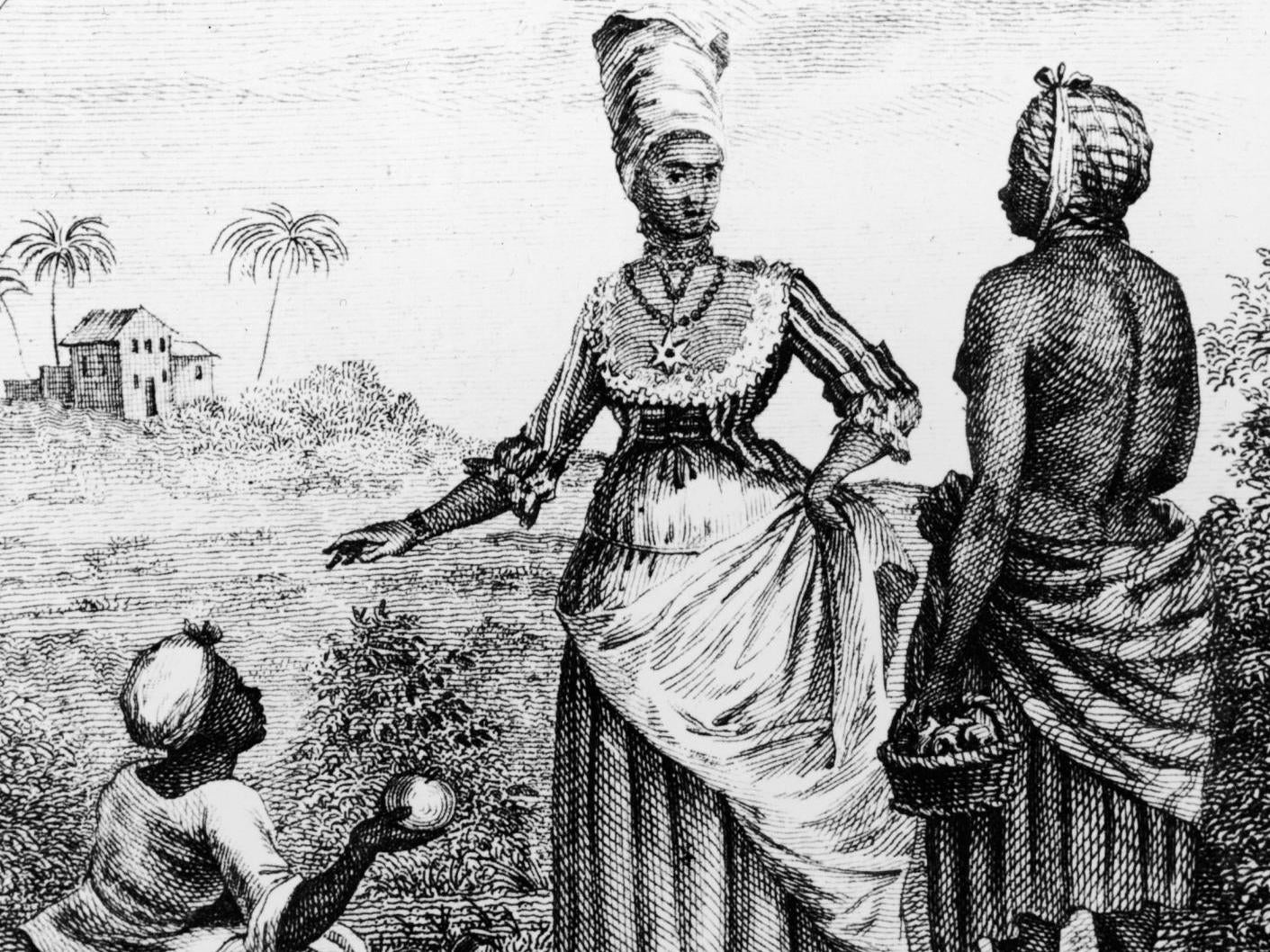Mary Prince: Who was the abolitionist and author of the first slavery memoir published in Britain by a woman?
Writer's autobiography moved enlightened 19th century readers with direct address: 'I have been a slave myself. I know what slaves feel'
Mary Prince, the first woman to have a memoir of her experiences of slavery published in Britain, was born on this date in 1788.
Celebrated on her 230th birthday in today’s Google Doodle, the author of The History of Mary Prince (1831) was born at Brackish Pond in Bermuda, daughter of a sawyer and a housemaid, the family “owned” by one Charles Myners.
As a child, she was sold from one brutal slavemaster to another around the Caribbean islands, eventually ending up in Antigua in 1815 in the service of John Adams Wood, where she worked as a nursemaid and joined the Moravian Church, learning to read.
She married Daniel James in December 1826 – a former slave set free, then working as a carpenter and cooper – but was horsewhipped for doing so by her master. The couple were separated when the Woods relocated to London, taking her with them.
In Britain, the passing of the Slave Trade Act in 1807, abolishing the slave trade in the UK, coincided with Mary’s freedom, when she escaped their cruelty.
But she had no means to support herself independently and lived at the Moravian Mission House in Hatton Gardens until finally finding work through the patronage of abolitionist Thomas Pringle, secretary of the Anti-Slavery Society.

As enslavement was still legal in the colonies - parliament fearing the impact of abolition on the lucrative sugar industry - Mary found her place by campaigning for its complete end with the society, following encouragement from Pringle.
She became the first black woman to present a petition to the British government in 1829, arguing for the basic human rights of slaves.
Her autobiography appeared two years later, transcribed by Susanna Strickland, causing a sensation with its frank depiction of the horrors of slavery and plantation life and through its direct manner of address.
“I have been a slave myself,” she wrote. “I know what slaves feel—I can tell by myself what other slaves feel, and by what they have told me. The man that says slaves be quite happy in slavery—that they don’t want to be free—that man is either ignorant or a lying person. I never heard a slave say so.”
Her description of being made to rake the salt ponds in Grand Turk is typically uncompromising:
“I was immediately sent to work in the salt water with the rest of the slaves. I was given a half barrel and a shovel, and had to stand up to my knees in the water, from four o’clock in the morning till nine, when we were given some Indian corn boiled in water.
“We were then called again to our tasks, and worked through the heat of the day; the sun flaming upon our heads like fire, and raising salt blisters in those parts which were not completely covered. Our feet and legs, from standing in the salt water for so many hours, soon became full of dreadful boils, which eat down in some cases to the bone.”
Particularly moving was a passage in which she recounted being separated from her sisters Hannah and Dinah at an auction:
“We followed my mother to the market-place. At length the vendue master, who was to offer us for sale like sheep or cattle, arrived, and asked my mother which was the eldest. She said nothing, but pointed to me. He took me by the hand, and led me out into the middle of the street, and, turning me slowly round, exposed me to the view of those who attended the vendue. I was soon surrounded by strange men, who examined and handled me in the same manner that a butcher would a calf or a lamb he was about to purchase. The bidding started at a few pounds, and gradually rose to £57. The people who stood by said that I had fetched a great sum for so young a slave. I then saw my sisters led forth, and sold to different owners. When the sale was over, my mother hugged and kissed us, and mourned over us, begging us to keep a good heart. It was a sad parting; one went one way, one another...”
The book attracted a libel lawsuit from John Wood, who published an article in Blackwood’s Magazine stating the author had “endeavoured to injure the character of my family by the most vile and infamous falsehoods”.
Mary Prince stood firm and appeared for her own defence in court, testifying to the truth of her account, but lost the case, only to win a subsequent battle with her publishers against slavery supporters James MacQueen and James Curtin.
She passed away in 1833, the year that Slavery Abolition Act was passed, which officially freed 800,000 slaves in the colonies, an event that could never have been brought to pass without her courage and that of her fellow abolitionists.
Join our commenting forum
Join thought-provoking conversations, follow other Independent readers and see their replies
Comments
Bookmark popover
Removed from bookmarks